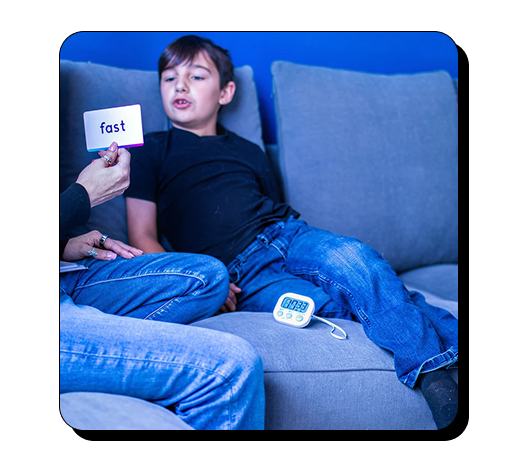The Global Reading Research That Started a Revolution
In 2018, engineer and father Zachary Silverzweig asked a question that would lead to a breakthrough in literacy education: "Why do Italian children learn to read in one year while American children need eight?"
The answer would revolutionize how we teach reading in English.
The Transparency Problem: Why English Is Uniquely Difficult
Linguists use the term "orthographic depth" to describe how consistently a language's writing system represents its sounds.
Transparent (Shallow) Languages:
- Finnish: 24 letters, 24 sounds, nearly 1:1 correspondence
- Spanish: 27 letters, ~30 sounds, highly predictable
- Italian: 21 letters, ~28 sounds, very consistent
Opaque (Deep) Languages:
- English: 26 letters, 44 sounds, 1,100+ spelling patterns
- French: Complex but systematic rules
- Danish: Irregular but less extreme than English
Research shows (Seymour, 2003) that children learning transparent languages achieve reading fluency 5-7 times faster than English learners.
The Missing Piece: Diacritical Marks in Other Languages
Many complex languages developed systems to help beginning readers:
Hebrew's Niqqud System:
- Dots and marks show vowel sounds
- Used for children and religious texts
- Gradually removed as readers advance
- Result: Faster early reading acquisition
Arabic's Tashkil:
- Similar vowel marking system
- Standard in educational materials
- Helps distinguish similar words
- Enables self-teaching
Historical English Attempts:
- 1551: John Hart's phonetic alphabet
- 1768: Benjamin Franklin's reformed alphabet
- 1906: Simplified Spelling Board
- All failed due to complete system overhaul requirements
The TIPS® Innovation: Engineering Meets Linguistics
Instead of reforming English spelling, TIPS® adds a layer of information:
The Algorithm:Silverzweig developed a probability-based algorithm that:
- Analyzed frequency of every letter-sound correspondence
- Identified the 50 most critical variations
- Created minimal visual markers for each
- Tested combinations for maximum clarity
The Result:
- Just 10 basic TIPS® unlock 15,000+ words
- 50 TIPS® total cover 99% of K-5 vocabulary
- No spelling changes required
- Works with existing materials
The Neuroscience: How TIPS® Aligns with Brain Reading Circuits
Dr. Stanislas Dehaene's research on the "reading brain" identifies four key areas:
- Visual Recognition → TIPS® makes patterns visible
- Phonological Processing → Consistent sound mapping
- Semantic Understanding → Faster word recognition = better comprehension
- Articulation Planning → Accurate pronunciation from sight
TIPS® supports all four simultaneously, creating stronger neural pathways faster than traditional methods.
Clinical Results: The Evidence
Pilot Study (2019):
- N=40 students, ages 4-7
- 8-week intervention
- Result: 9X faster progress vs. control
- 4-year-olds reading at 1st-grade level
NYC Implementation (2021-2022):
- N=500+ students across 5 schools
- Title I populations
- Result: 60% improvement in one semester
- 100% of at-risk students improved
Houston ISD Special Education (2022-2023):
- Focused on students with learning disabilities
- District-wide SPED approval
- Result: 3X faster progress than traditional interventions
- Significant improvements in dyslexic students
Johns Hopkins Research Partnership (Ongoing):
- Longitudinal study tracking 1,000+ students
- Comparing TIPS® to traditional phonics and whole language
- Preliminary results show sustained advantages
Why TIPS® Works: The Cognitive Load Theory
Traditional Reading Cognitive Load:
- Visual processing (recognize letters)
- Rule retrieval (remember phonics rules)
- Exception checking (is this word irregular?)
- Context guessing (what makes sense?)
- Meaning construction (comprehension)
TIPS® Cognitive Load:
- Visual processing (see letter + TIPS®)
- Sound production (direct decode)
- Meaning construction (comprehension)
By reducing cognitive load by 60%, more mental resources are available for comprehension—the actual goal of reading.
Addressing the Critics: Common Concerns
"Won't students become dependent on TIPS®?"Research shows the opposite. Like training wheels on a bike, TIPS® create motor memory (sight words) faster than memorization alone. Students naturally stop noticing TIPS® as fluency develops.
"This seems too simple to work."Simple solutions to complex problems often seem obvious in hindsight. Wheels on luggage. Post-it notes. TIPS® for reading.
"How is this different from other marking systems?"Previous attempts were either too complex (IPA), incomplete (partial phonetic alphabets), or required total spelling reform. TIPS® is the first to be minimal, complete, and overlay-based.
The Dyslexia Connection
Dyslexia affects 15-20% of the population, characterized by difficulty with phonological processing. TIPS® helps by:
- Eliminating guesswork
- Providing consistent visual-phonetic mapping
- Reducing working memory load
- Building confidence through success
Early results show dyslexic students making gains previously thought impossible.
Global Implications: The Future of English Literacy
Immediate Applications:
- ESL/EFL instruction worldwide
- Adult literacy programs
- Indigenous language preservation
- Special education mainstreaming
Long-term Vision:If TIPS® becomes standard in early reading education:
- Literacy rates could match transparent language countries
- Achievement gaps could close within a generation
- English could become as easy to learn as Spanish
- Global English education could be revolutionized
The Research Continues
Current studies are investigating:
- Optimal age for TIPS® introduction
- Long-term retention rates
- Cross-linguistic applications
- Digital vs. physical implementation
- Teacher training optimization
Conclusion: A Solution 500 Years in the Making
English spelling has been called "the worst alphabetic system ever created." For 500 years, reformers have tried to fix it. TIPS® doesn't fix English—it gives readers the tool they've always needed to decode it.
The science is clear. The results are proven. The revolution has begun.
Want to learn more? [Download the research summary] or [Contact our research team]
References available at tinyivy.com/research
.png)



